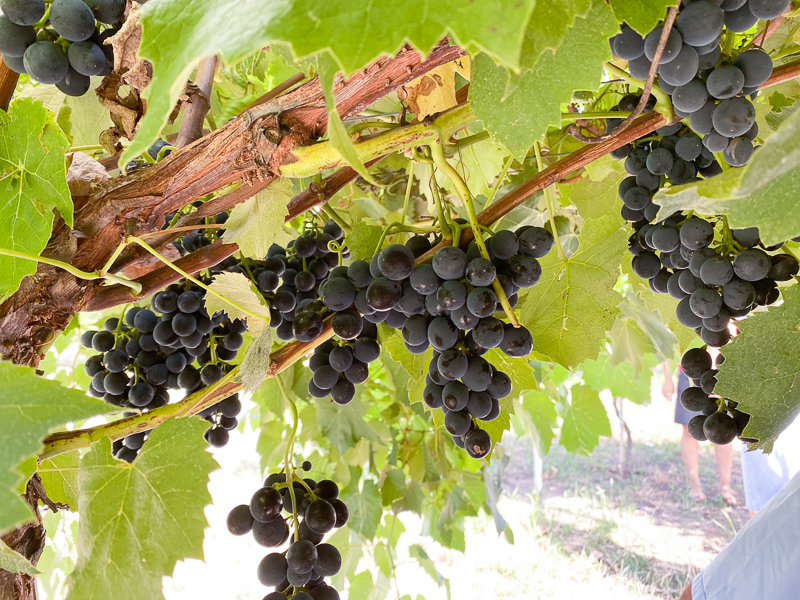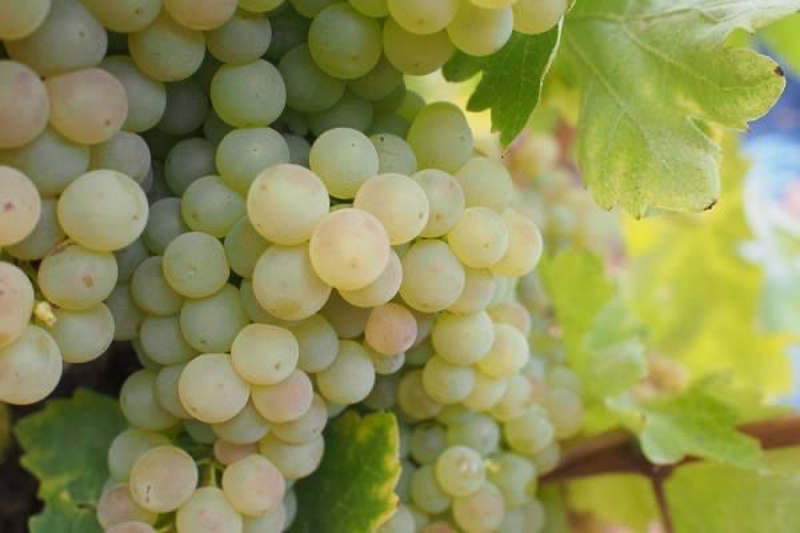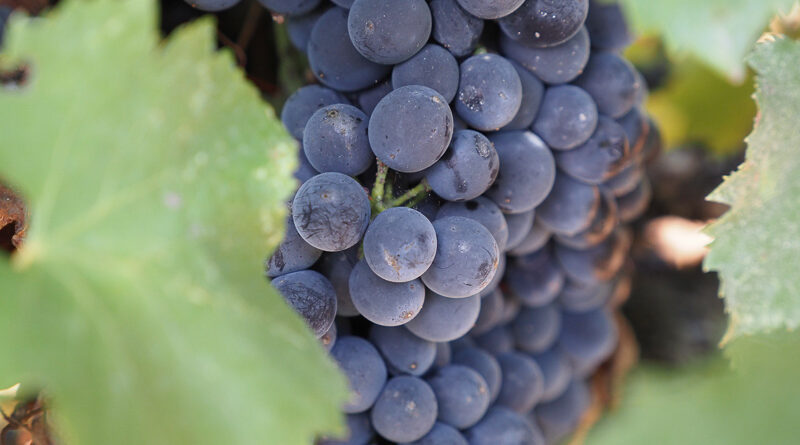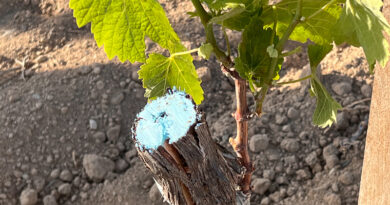Big news: new genetic evidence shows that the grapevine was domesticated in two locations, and 3000 years earlier than previously thought
Hold the press: Georgia turns out not to be the origin of the wine grapes widely used today.
A significant, large study involving 89 researchers from 23 different institutions, has changed the story of the origin of grapevines. Published in the leading journal Science, the paper from Yang Dong and colleagues show that rather than the grapevine having one domestication centre – previously thought to be the south Caucasus (modern day Georgia, Armenia and Azerbaijan) some 8000 years ago – there were two contemporaneous domestication events 11 000 years ago, with one in the near east (the Levant; modern day Israel, Palestine, Lebanon and Jordan) and the other in the Caucasus.
But this is the really interesting bit: the domesticated vines from the Levant made their way westwards with human populations and through a series of introgressions (accidental cross-breeding with wild vines) in Europe they gave rise to the Vitis vinifera varieties widely grown today. The domesticated vines from the Caucasus, until now thought to be the progenitors of wine grapes worldwide, gave rise to the varieties currently grown in Georgia and Armenia, and are quite different in origin, although similar selective pressures accompanying domestication have given both groups of wine grapes shared features.
In this collaborative study, Dong and colleagues used a huge set of 2448 grapevine genomes taken from 23 institutions in 16 countries to try to get to grips with the origin of modern grapes, focusing on domestication of V. vinifera from the wild grape species Vitis sylvestris, and the spread of vinifera from its domestication centres.
They began by sequencing a reference example of wild V. sylvestris, which in this case was VS-1 from Tunisia. They then looked at the sequences of 3186 different accessions (grapevine varieties in collections), including 2237 examples of V. vinifera and 949 of V. sylvestris. They also included data from 339 previously sequenced accessions, including 73 wild vines. Of this group of 3525 varieties, there were some duplicates (synonyms and clones), and the final number of unique genotypes was 2448, including 844 wild vines.
They were able to split these up on into 4 wild groups, and 6 vinifera groups (west Asian table grapes, Caucasian wine grapes, Muscat table and wine grapes, Balkan wine grapes, Iberian wine grapes and western European wine grapes).
The V. sylvestris wild vines were split into two populations by glacial episodes about 500 000 years ago: western and eastern. Then, the last glacial advance split the eastern ecotype of sylvestris into two groups, each of which gave rise to domestication events, 1000 km apart and at the same time, 11 000 years ago. One was in the near east (the Levant; CG1 for ‘cultivated grape 1’), and one was in the Caucasus (CG2).
Previous studies from archaeology and some limited genetic work had suggested that the Georgian/Armenian CG2 varieties were the first domesticated and then gave rise to the grape varieties widely grown today, migrating along with the Neolithic spread of agriculture to Europe. But these new results show that the CG2 cultivars were mainly confined to both sides of the Caucasus Mountains, with a relatively limited dispersal into the Carpathian Basin. This domestication had quite a minor role in grapevine diversification. The extant Georgian varieties are quite different to most western varieties.
In comparison, the CG1 domestication, which was initially for table grapes for consumption and not winemaking, ended up having a huge influence on the modern world of wine. From the Levant, these domesticated V. vinifera grapes spread eastward through Central Asia
into India and China, following the Inner Asian Mountain Corridor (a journey taken by other crops). And they spread north to the Caucasus over the Zagros mountains, and then northwest through Anatolia to the Balkans. And they also spread westward across the north African coastline. Most significantly for wine, they also travelled to Iberia and Western Europe.
‘These results do cause us to rethink the story of grapevine domestication, especially in terms of where our wine came from,’ says Professor Robin Allaby of the University of Warwick, where he heads up a group looking at plant evolution and domestication. ‘Previously it was thought that wine making came mostly from the South Caucasus region. However, this study shows that there were actually two domestications about 1000 km apart at the same time, and our wine actually comes from grape lineages that were domesticated in the Near East for eating rather than wine. However, when those grapes came to Europe they crossed with local wild grapes making smaller, less sweet grapes with thicker skins that were not so good for eating, but actually great for making wine. It could have been an accidental discovery. Most of our wine heritage comes from that lineage.’

Allaby adds, ‘The Levant is home to many of our domesticated plant species (such as wheat, barley, flax and lentils). Grapes can too be added to that list. The earliest domesticated forms were of cereals, at about 11 000-11 500 years ago. In this study the origins of grapes in the Near East are dated to a similar time, which is surprisingly early.’
Can we dispute these results at all? ‘We do not have direct archaeological evidence of domesticated grapes that early,’ says Allaby. ‘However, the team also dated genetically the age of grapes at various points through Europe, and they match the initial spread of agriculture – again we do not have direct archaeological evidence for this. Together this does look like grapes were amongst the earliest domesticates, but it is hard to explain why archaeological evidence has not been found to support it. There are two possibilities. (1) The dates are too old, over-estimated perhaps because of the effects of vegetative propagation (slowing down the molecular clock); or (2) that there was a long period of exploitation of wild grape forms so we do not see the early stages of domestication in the archaeological record. This is quite precedented in other domesticated forms – dogs for instance looked like wolves for a long time before ‘dog morphology’ took hold. It’s a new mystery for us to solve. Probably the best way to find out will be to retrieve ancient genomes for archaeological samples of grape seeds.’

One of the participating groups in this study is based in Israel headed up by Dr Elyashiv Drori. His group have been working on trying to identify ancient varieties used in this ancient wine country, but which were lost during the period of 700 CE to the 1940s when very little wine was made here. ‘There was a very small collection of indigenous traditional grape varieties that was still kept by the Arab population, mainly as table grapes, because they are not allowed to produce wine, because of Moslem prohibition,’ he says. ‘We started with that: it was 26 varieties but because of synonyms it was 19 genomes. We soon figured out that this was not enough and we were sure that there should be some much more suitable varieties because there was a huge wine industry here in the past. So we went out and surveyed the whole country in the wild. We found more than 600 feral grape vines and took them into the lab, we analysed their genetics using SSR analysis. We found that we have 85 unique varieties, in addition to the 19 we already had. We think there are about 60 which are very interesting for wine production, with smaller berries, higher anthocyanin and more juiciness (some of them are hard fleshed), and higher sugar accumulation. Some are unsuitable because they have low sugar accumulation or low acidity. So we are sieving through this population. Today we have about 12 nice varieties that can produce wines with a wide range of characteristics.’ They have been working on making these varieties available to wine growers. ‘There are around 12 and we are cleaning them from viruses. Two of them are now released and are with the nurseries.’
Drori has developed a new method for cleaning grapevine material from viruses using etiolation. ‘This makes a huge difference in the accuracy.’ How does it work? ‘You take the cane, and when it barely starts budburst you put it in the dark, and it elongates very fast. This makes a longer, larger apical meristem, and we can cut a larger portion than regular meristem excision. They usually take 0.2 mm; I take 1 mm. It is a huge difference.’
This is put into tissue culture and a new plant is grown. ‘It takes less time because it is 1 mm and not 0.2 mm. After about three months we can start checking it for virus.’
‘Hopefully the Israeli wine industry will really be changed in 10 years,’ he says, ‘and most wineries will have at least one indigenous variety in their portfolio.’

These varieties have been included in the study. ‘Our population is probably one of the oldest or the oldest,’ says Drori. ‘It is dated to the domestication 11 000 years ago from local V. sylvestris. We know that this did not come from abroad: it was locally domesticated. It is inside a big group called cultivated group 1 (CG1), which is generally thought as table grape population. This was domesticated from local V. sylvestris. We have a unique V. sylvestris population, which has white grapes. We are now trying to understand if the mutations we have in this white sylvestris are the ancestors of white grapes. There was a huge debate about how white grapes were born. Was it domestication of black grapes and then emergence of white grapes? This is a very interesting point.’ One of his PhD students is working on this. ‘We also believe that this population has a huge amount of drought resistance genes because it was actually developed in a very dry climate. If you are looking for drought resistance, this will be the best candidate population to find these genes. One is just the avoidance [of drought] by later budburst, breaking dormancy later.’




